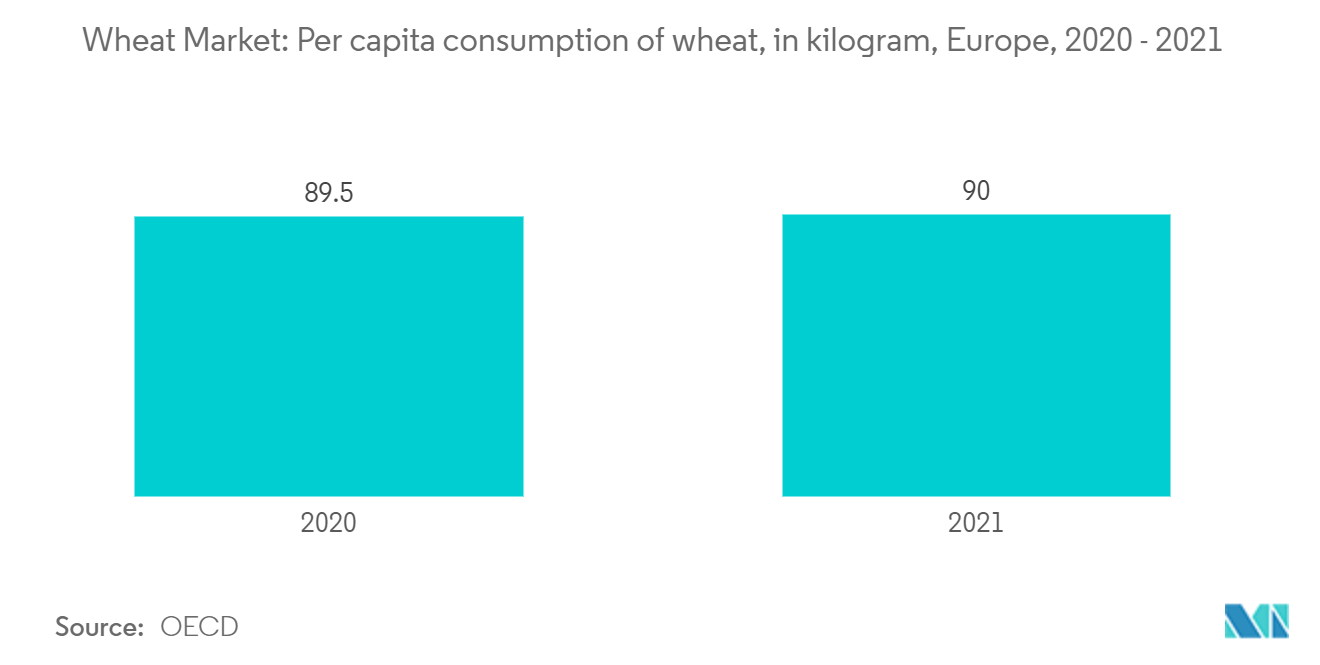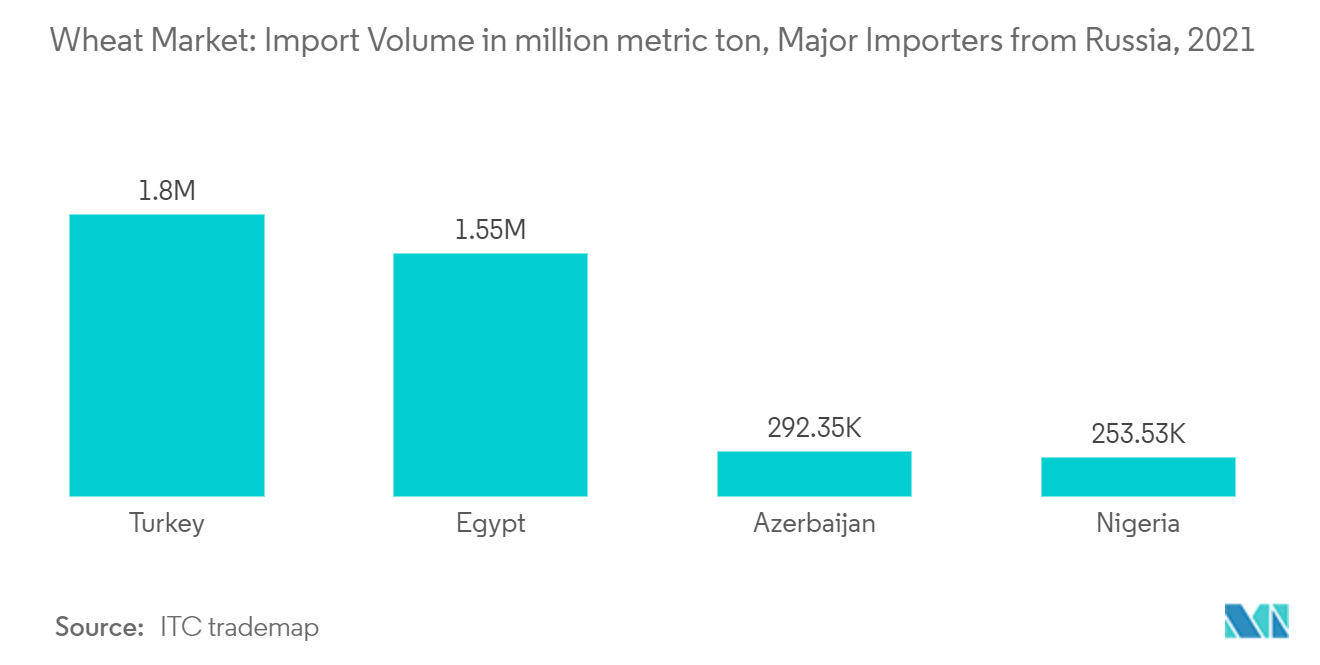Market Trends of Europe Wheat Industry
This section covers the major market trends shaping the Europe Wheat Market according to our research experts:
Increase in the demand for Wheat based products
In Europe, wheat is grown as an essential and staple cereal crop of the people living there. Wheat consumption is high in Malta, Italy, and Romania. Growing consumer demand for convenience food products is bolstering the growth of the wheat market in Europe. The rise in urbanization changed consumption patterns and made people tend towards more convenience foods such as bread, confectionary, etc. Along with this, consumers are interested in nature, convenience, and indulgence, and they are moving away from home consumption, which means less time spent on home food preparation and consumption. Hence, this change in consumption patterns positively affects wheat consumption.
Wheat is used in many types of bakery products and different kinds of food products. The consumption of such convenience foods is high in Europe. People in many European countries widely consume bread, and many eat bread or wheat-based meals at least once a day. Additionally, wheat is an excellent gluten source. It is a natural binder for holding food together and is best suited for baked goods and processed meat products. So, the increase in wheat usage in making food products raised wheat consumption in the region.
Along with this, self-sufficiency in production is also increasing wheat consumption in this region. For instance, according to OECD, Europe's per capita wheat consumption increased from 89.5 kg in 2020 to 90.04 kg in 2021. This increase in consumption is also supported by the rise in the area harvested under wheat. The area harvested under wheat is 70.1 in 2020 and 71.2 in 2021. Thus, the increasing land under wheat cultivation is pushing production, thereby increasing the per capita consumption of wheat. It leads to the wheat market growth during the forecast period.

Russia is the Leading Exporter of Wheat in Europe
Russia is the highest producer of wheat in the region. It produced around 85 million metric tons of grain in 2020, an increase of 14.8% from 2019. Moreover, globally, Russia is the third-largest wheat-producing country. The area harvested under wheat increased from 27 million hectares in 2019 to 28 million hectares in 2020. The black soil region in Southern Russia is described as the best agricultural land in the world. Wheat is mainly grown as a winter crop in the region.
According to USDA, wheat consumption in the country accounted for 41,750 thousand metric tons in 2021. Wheat is a staple food in the country, and consumption is anticipated to increase. Also, since wheat is a crop sensitive to weather, its production may be influenced by climate change. The country's extensive unused land resources and significant yield gaps are the factors that are likely to increase the production of wheat shortly substantially. The warming of the climate and extreme temperatures in Russia can weaken the global food security of major crops like wheat are affected.
Additionally, according to USDA, Russia retains the position of the world's largest wheat exporter, accounting for 16% of global wheat export in the marketing year 2021/22. Furthermore, according to the ITC trade map, Russia exported 27.3 million metric tons of wheat in 2021. Turkey, Egypt, Azerbaijan, and Nigeria are the major importers of wheat from Russia, sharing 24.7%, 21.2%, 4%, and 3%, respectively. Egypt is the largest wheat importer in the world and consistently purchases large volumes of Russian and Ukrainian wheat to meet domestic demand. Thus leading in production and exports, Russia dominates the wheat market.


